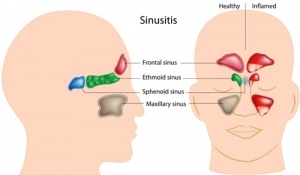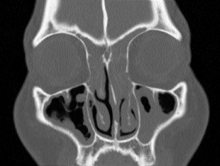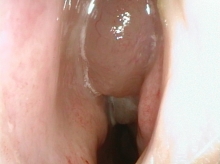Sinusitis

Where are the sinuses and what is their function?
The sinuses are air filled cavities within the bones of the face, extending back between the eyes. They have the appearance of a ‘honeycomb’ with bony partitions separating the air-filled sinuses. Their function is not completely understood. They communicate with the nose and diseases such as infection and inflammation that affects the nose can also affect the sinuses.
What types of problems might I have with my sinuses?
Recurrent acute sinusitis
This is worse than the common cold. Rather than resolving in a couple of days, acute sinusitis will persist greater than 10 days or you may get a little better then get worse again during this time. Either viruses or bacteria may cause it. This form of sinusitis will resolve completely, but it takes longer than the common cold.
If you have recurrent episodes of acute sinusitis, it may be that you have some structural changes within the nose and sinuses that predispose you to getting repeated sinus infections. These can usually be corrected with surgery and give an excellent chance of resolution of the recurrent infections.

Chronic sinusitis
This is a low-grade infection that lasts for longer than 12 weeks. Patients with this condition will complain of a combination of a blocked nose, discharge from the front of the nose and down the back of the throat, as well as pain across the face, headache or a change in the sense of smell. In contrast to recurrent acute sinusitis, patients have at least some symptoms all the time although they may fluctuate in their severity. Occasionally chronic sinusitis may cause the formation of nasal polyps. These are grape-like swellings of the lining of the sinuses which protrude into the nasal cavity. These can cause significant nasal airway obstruction.

Chronic sinusitis, with or without the nasal polyps, is treated first using medical therapies. However if these fail then surgery is generally recommended. Find out more about sinus surgery.